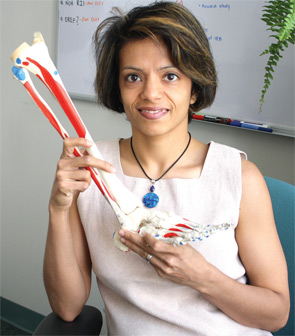The availability of OTC braces and foot orthotics means that more people can afford these treatments. It has greatly opened the scope of options available in this space. It also tends to be easier to adjust these devices as a person’s needs change without having to get another new orthotic.
The efficacy of noncustom devices also has lead to an increase in the variety of appliance designs. They are now available in many different levels of cushioning and flexibility and in different types of fabric.
“Whatever the activity my patient would like to participate in, I can now get a reasonably priced device that will be appropriate to their needs,” says Dr. Rao. “Having devices that are well engineered and made with very high-quality material available off the shelf is one of the most exciting developments we have seen recently.”
Do Not Oversell
It is important that physicians and others on the treatment team do not oversell the benefits of using orthotics when talking to their patients.
“I tell my patients right up front that I can help with the pain, but I can’t cure the arthritis,” says Erick Janisse, CO, CPed, vice-president at National Pedorthic Services, Inc., in Milwaukee. “My absolute best-case scenario is that we might be able to slow the arthritis’ progression down a little.”
Dr. Hillstrom notes that there is, as of yet, no literature showing that orthotics can stop progression of knee OA. This is the current “Holy Grail” of osteoarthritis research.
One area where there is agreement is that the proper use of orthotics can be useful in lessening pain.
Less Pain

“We have done research showing that bracing and foot orthotics can result in mean pain reductions of 30% or more on visual analog scales,” says Dr. Hillstrom. “That level is greater than what is seen with most analgesics and antiinflammatory medications. Still, the preliminary findings need to be supported by randomized, controlled trials.”
Their use may not be quite as grey when discussing the use of foot orthotics and special shoes.
“Good literature supports foot orthotic use in musculoskeletal pathologies,” says Dr. Nolan. “I think they are more effective when there is a component of the problem that is linked to biomechanics. If you have a foot type that is putting more load on one compartment of the knee, addressing the mechanics can certainly impact pathology.”
Lifestyle Fit
When making treatment decisions on referring patients for possible orthotic use, talk to the patient about how the appliance will fit in with their lifestyle. The best device in the world won’t work if it sits in the patient’s closet.
